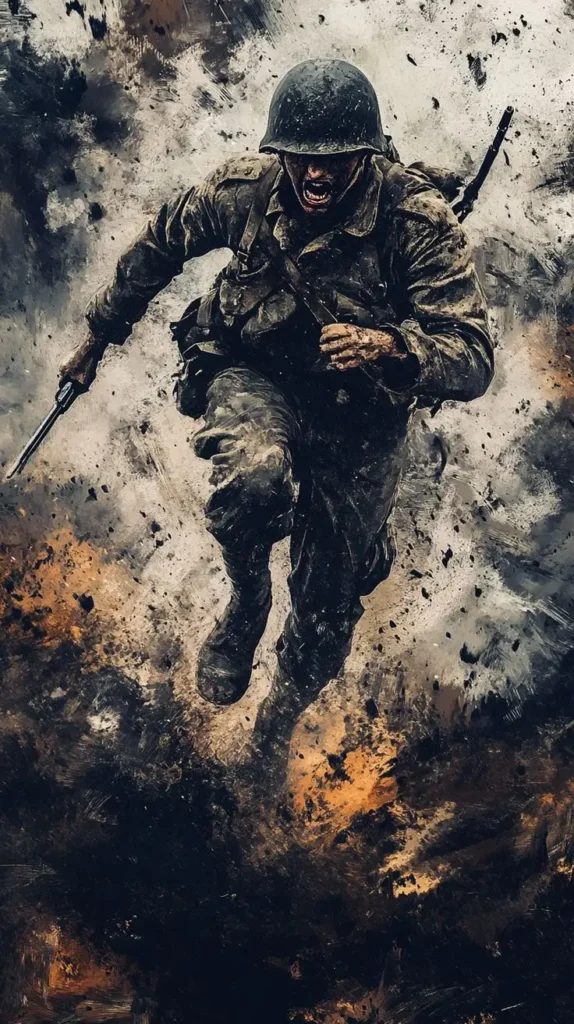The Indian Army surgical strike at Myanmar border on the camps of ULFA-I and NSCN-K in Myanmar’s Naga Self-Administered Zone. It is conducted successfully and Approximately More than 100 drones were used in this mission which resulted in the killing of many senior militants. Tensions continue to escalate with latest reports of threatening remarks from the ULFA-I outfit. Here’s what to know about this historic surgical strike in Myanmar and the fallout from it.
Description of the Incident: Surgical Strikes at Myanmar border
On 13 July 2025, the Indian Army conducted a string of surgical strikes across the borders in Myanmar on ULFA (I) and NSCN- K camps. The operation, carried out in the early hours of Sunday, struck at militant camps that have long offered a refuge to separatist groups operating in the area.
The drone operations utilized more than 100 UAVs, which enabled a quick and accurate strike by the identified terrorist camps. The ECHQ of ULFA-I at Hoyat Basti and the 779 Camp at Waktham Basti were the major targets. The groups involved, ULFA-I and NSCN-K, are involved in violent insurgent activities in Northeast India and have long used Myanmar as a base.
at least three top ULFA-I leaders were neutralized in the strike, in which the group’s military strategist Nayan Medhi is also believed to have been killed, reports said. ULFA-I confirmed the deaths but put the number of injured at 19. In its aftermath, ULFA-I also threatened to avenge to the strike, signaling the rise of tensions in the region.Read more articles like this at News.highzones.com
It is also being said that The Myanmar Army is involved in a joint operation with Indian authorities, which marks a rare cooperation between the two countries against the trans-border terror.
Current Updates and Developments on Surgical Strikes at Myanmar border
Operation Drone Strikes Effect: The offensive had aimed high profile camps and key commanders of the ULFA-I and NSCN-K. The surgical strikes of the Indian Army employed state-of-the-art drone technology leading to negligible civil casualties despite destroying infrastructure of the militants.
Casualties and damage ULFA-I leadership has stated that three of its top leaders were killed, although the Indian Army has not yet confirmed the reports. The ULFA-I said the attacks were carried out when one of the leaders was being laid to rest.
The fear of retaliation: ULFA-I has threatened revenge on the Indian Army for these drone strikes and said it would carry out more anti-India activities in months to come. The group has experience using guerilla tactics and analysts say the region is now preparing for the violence to ratchet up.
Myanmar’s Role: Myanmar’s military has worked with India against insurgent groups that use its territory. The cooperation is a sign of increasingly strong unofficial ties between the two countries on cross-border terror.
Militant Groups in the Region:
The Naga Self-Administered Zone and its surrounding areas in Myanmar is home to a long-running insurgency or separatist movement. A few insurgent groups were working in this area, but the manner in which the Indian army has acted in that region was a major effort to eliminate them.
Here are some of the most notorious militant groups in the region:
| Group | Type | Soldier Capacity | Major Attacks | Year of Formation |
|---|---|---|---|---|
| ULFA-I | Leftist/Separatist | 200-500 | 2016 Tinsukia Attack, 2019 Assam Bombings | 1979 |
| NSCN-K | Ethno-nationalist | 300-700 | 2015 Chandel Ambush, 2019 Manipur Attack | 1988 |
| NSCN-IM | Ethno-nationalist | 500-1000 | 2015 Nagaland Attacks, 2020 Gunfights | 1980 |
| NDFB-S | Militant/Separatist | 200-400 | 2014 Assam Massacre, 2015 Guwahati Bombing | 1986 |
- ULFA-I: This group has waged a decades-long struggle for an independent Assam. They frequently use ambushes, bombings or hit-and-run tactics against both civilians and security forces.
- NSCN-K: National Socialist Council of Nagaland-Khaplang is infamous for its armed struggle to establish an independent Naga state. The group carried out some deadly ambushes on Indian security forces.
- NSCN-IM: Having a bigger manpower and fire power, NSCN-IM has been indulging in many skirmishes and attacks in Nagaland and Manipur.
- NDFB-S: The National Democratic Front of Bodoland-Songbijit has been involved mass killings, cross-border terrorism, especially in Assam and Bodoland region.

Indian Army’s Glory: Surgical Strikes at Myanmar border
Myanmar clocked surgical strike is yet another brilliance of Indian Army showcasing its state-of-the-art skill-sets and firm resolve to defend safeguard the nation. “The use of more than 100 swarm drones in conjunction with UN peacekeepers of the Nigerian contingent during the conduct of the last counter-insurgency attack against terrorists, on Sunday the 12th of May 2019 is just a tip of the iceberg of wholesome partnership between UN and Nigerian Army to tackling security challenges,” the army said in a statement on May 22, in an unusually worded release that made it difficult to confirm how many drones were used.
The operation is notable because it is the first big offensive against insurgent camps in Myanmar mounted by the Indian forces in recent years. The swift and strong action by the Indian Army is also seen as a signal to the terrorists operating across the border without any fear. The operation’s success also underscores the army’s preparedness to take on regional enemies even as it works with friendly countries for regional security.
The accuracy and effectiveness of these surgical strikes are bound to create a lasting influence on India’s counterinsurgency operations in the northeast and beyond, consolidating its position as a major actor in the counterinsurgency domain. Read more articles like this at News.highzones.com
Here are common questions and answers on the Myanmar Surgical Strike:
The Myanmar surgical strike is a term used to describe a cross-border military operation carried out by Indian Army on 13 July 2025 against NSCA-K and ULFA-I militant camps in Myanmar by using more than 100 UAVs.
Principal outfit attacked were ULFA-I and NSCN-K which have been involved in insurgency activities in Northeast India for many years.
It was a surgical strike with the intent to disrupt cross-border terrorism in the Indian Northeast by dismantling bunkers of terrorists and taking out the top terror commanders operating from Myanmar hinterland.
Over 100 Indian Army’s unmanned aerial vehicles (UAVs) were deployed for the targeted drone attacks on the militant terror camps.
Three senior leaders of the ULFA-I have died but Indian Army is yet to confirm the exact number of casualties.
ULFA-I has promised reprisal since the attack was a huge blow, they say they will “avenge” Indian forces.
It comes as India increasingly looks at cross-border operations to take out terrorists, opening a new chapter in the country’s defense doctrine.
Disclaimer:
The information in this article is based on the most recent reports at the time of writing. Though care has been taken to make available the most accurate and up to date information. the same should not however be treated as a statement of law or used for any legal purposes. In case of any ambiguity or doubts, users are advised to verify / check with the Department and / or other source(s), and to obtain appropriate professional advice.” Indian Army The details of the casualties whether dead or injured, the operation, and other details may still be further confirmed by official updates from the Indian Army or concerned authorities.
The story is a snapshot of the condition and will be updated if and when more details are released. (The opinions in article are those of the author and do not reflect the position of any government or military department.) For the most recent and currently available information, readers are referred to original sources. Read more articles like this at News.highzones.com

